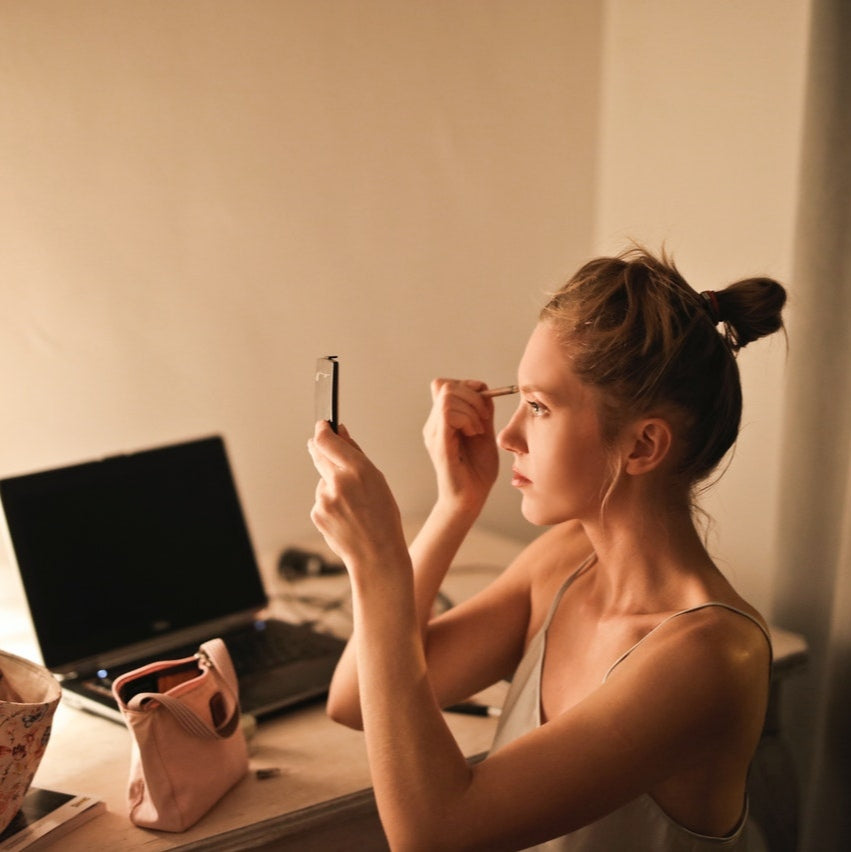
The importance of skin colour and undertone
How do you determine your skin colour and undertone? Your skin tone ultimately determines the depth of your complexion & your undertone is what makes your overall skin tone unique to you.
Tones are categorised as fair, olive and, medium/dark with undertones of cool, with pink/blue undertones; Warm with yellow/green undertones and neutral which is a combination of both. We think that undertone can be more important than the tone of your skin. Foundation looks off when you select the wrong undertone for your skin and it doesn't quite match.
Working out your undertone
Now we may have confused you with all this talk of tones and undertones. its really not that scary. We have some simple tricks to help you find what your undertone is.
its important to realise that there are 6 different shades to your undertone. Cool shades are more pink, blue and red while warm tones are yellow, peach and golden, with neutral being a combination of all. Below we share a few tricks to help you
1. Jewellery test
Do you prefer to wear silver or gold? Those who suit gold and are complimented on how it suits you will most likely fall under the warm category as the peachy, yellow and gold tones match your skin type better. if you prefer silver against your skin you are more likely to have a more blueish/pink tones to your skin. If you are lucky enough to be able to wear both you have fallen in to the neutral undertones.

2. Vein Test
This is one of the easiest tests you can do at home and really helps you to decide your skin undertone, much easier than the jewellery test. you need some good natural lighting and look at the veins on your wrist. Are your veins more of a blue colour or more green?
Green means you have warmer tones and undertones to your skin with blue meaning your undertone is more towards the cool end of the spectrum. If you are neutral you may find it difficult to distinguish between blue and yellow/green vein colour.
If all else fails get your self colour matched. Most Boots stores will be able to colour match you and find your skin tone and undertones with specialist equipment or with an experienced makeup artist.
Which foundation to choose
Now you have a handle on skin tone and undertone you can select the correct foundation shade for you.
Think of your undertone as the family your skin belongs too: your skin tone would be how light you fall in that colour’s spectrum. Most skin tone categories use phrases like fair, light-medium, medium, dark, and dark-deep to help us determine our complexion match. See the chart below for all our foundation shades categorised by tone and undertone.

Here are some easy tips to ensure your foundation is flattering every time.
- Skin prep - skin preparation is very important before putting on your foundation.If skin is too dry your make up will look flaky, if its too oily or over moisturised it will look shiny easily and will slip off as the day goes on..Start with a good base. Our facial serum is a great base to start with. It is ultra light and helps to smooth over pores with out being greasy.
- Darker is better - If in doubt go for a slightly darker shade. Using a shade that is to light will age your complexion and tends to be less flattering. Just ensure you blend past the jawline down on to the neck for seamless coverage.
- Mix your products - Don't be scared to mix or layer your products together to create your own custom shades, using green correction powder if you have particularly red undertones can help you to get a more flawless cover. Add a little highlighter to your cupids bow and cheek bones for a fresher look
- Natural - Pure mineral make up should contain 100% natural ingredients, making it far less likely to irritate, clog pores and cause reactions. Mineral make up binds to the skins natural oils providing a long lasting natural finish. Check out our Natural Make up collection

